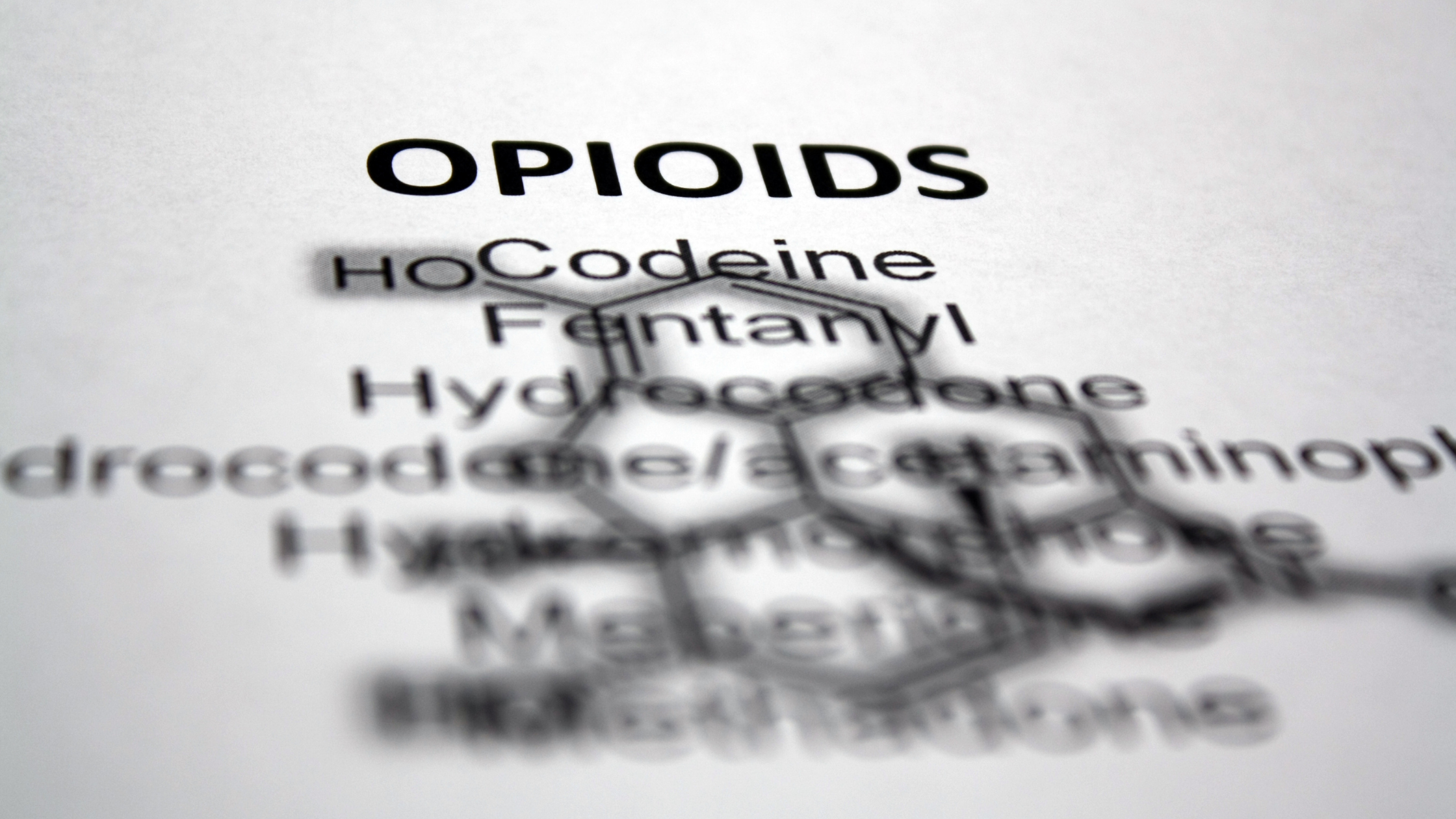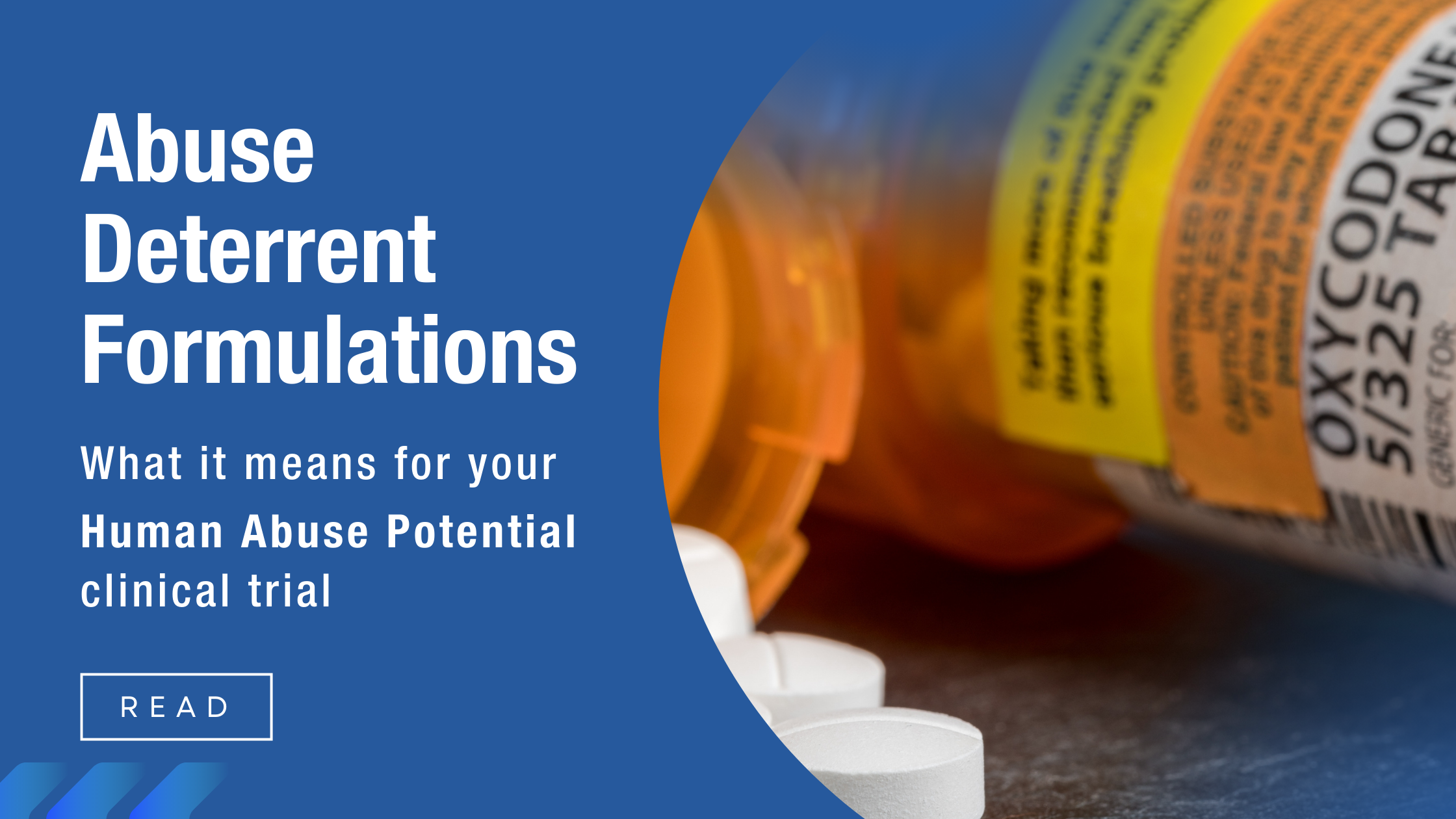Abuse Deterrent Formulations
What Is an Abuse-Deterrent Formulation?
An abuse-deterrent formulation (ADF) of a prescription drug is one that reduces the potential for abuse of that drug. The unique properties of ADFs are meant to deter abuse by making it more difficult to manipulate the drug product, or to make abuse of the drug product less attractive or rewarding. “Abuse” in this context is defined as the intentional, non-therapeutic use of a drug product in order to achieve a desirable psychological effect, such as euphoria, or physiological effect, such as alertness.
The Need for Abuse Deterrent Formulations
Drugs that exert their effects on the central nervous system (CNS) are the most commonly abused, most notably opioids, depressants, and stimulants. The abuse of prescription drugs was reported by more than 16 million Americans in 2020. This behavior carries significant risks, the most serious being addiction and death from overdose.
Among the various approaches aimed at addressing the opioid crisis, the development of safer opioids that are formulated to deter abuse became a high priority for the Food and Drug Administration (FDA). More recently, the FDA has recognized the growing abuse of CNS stimulants as a public health concern.
The most common form of prescription drug abuse is via the intended route of administration, that is, swallowing intact tablets or capsules in doses higher than prescribed. However, the greatest risk comes from manipulating the drug product by either physical (e.g., crushing) or chemical (e.g., solvent extraction) means in order to snort it or inject it.
The goal of abuse-deterrent formulations of medications is to mitigate abuse by impeding the ability to use the drug in an unintended manner while still retaining the drug’s clinical efficacy for legitimate users.
Abuse-Deterrent Opioids
Opioids act on opioid receptors in the CNS to reduce the intensity of pain perception. However, opioids also activate reward centers in the brain, which induces the feeling of euphoria (“high”) that underlies their potential for abuse.
Opioids are predominantly abused by simply taking more of the drug than prescribed; however, chewing or dissolving the drug product before oral administration is also common. Both immediate-release (IR) and extended-release (ER) opioids are abused; however, the ER formulations may be especially attractive due to their higher per-dose level of active ingredient. Physical and chemical manipulation can be used to defeat the ER mechanism and release the entire opioid dose, referred to as “dose dumping,” for intranasal inhalation or intravenous (IV) injection.
Along with other risk reduction strategies, abuse-deterrent formulation opioids provide clinicians the opportunity to minimize the risk of abuse while still ensuring adequate pain management for their patients. With this goal in mind, the FDA has issued two guidance for industry documents (one for generic drugs) to assist drugmakers in developing and evaluating ADF opioids.
There are several abuse-deterrent formulation opioids currently on the market that have FDA-approved labelling describing their abuse-deterrent properties:

Abuse-Deterrent Stimulants
CNS stimulants increase alertness and attention and are predominantly used to treat attention-deficit hyperactivity disorder (ADHD). Stimulants are predominantly abused by students for the purpose of enhancing academic performance, and non-oral routes of abuse are much less common than for opioids.
Although there are currently no approved abuse-deterrent formulation stimulants on the market, drug manufacturers have recently begun to develop novel prescription stimulants intended to deter abuse. For example, Vallon Pharmaceuticals is working on an ADF of IR dextroamphetamine that is designed to deter both intranasal and IV abuse by embedding the active ingredient in a semi-solid paste, and Arbor Pharmaceuticals submitted a New Drug Application (NDA) in 2020 for their pellet-in-capsule formulation of IR amphetamine sulfate, although the FDA concluded that the formulation did not have significant abuse-deterrent effects.
As yet, there is no regulatory guidance on the development and evaluation of ADF stimulants; however, in 2019, the FDA did solicit public input on the potential role of ADF products in reducing prescription stimulant abuse.
Abuse-Deterrent Formulation Technologies
ADF technologies continue to evolve, but there are several recognized approaches:
Agonist-antagonist Combinations
The antagonist reduces or counteracts the euphoria associated with the opioid but is only released by manipulating the drug product.
Physical and Chemical Barriers
Physical barriers resist mechanical manipulation, such as crushing and grinding, of the drug product while chemical barriers, such as gelling agents, resist extraction of the active ingredient using common solvents (eg, water, alcohol) or change the physical form of the drug to make it difficult to snort or inject.
Aversive Agents
These are added in order to produce an unpleasant effect (eg, nasal irritation) if the drug product is manipulated.
Delivery Systems
Some drug delivery methods are innately more resistant to abuse (eg, sustained-release depot injectable, subcutaneous implant).
Prodrugs
Prodrugs must be metabolized in the gastrointestinal tract to release the active ingredient, thereby deterring non-oral administration of the drug product.
The first opioid to be granted ADF labelling was an ER formulation of OxyContin®. This ADF technology involves high-molecular-weight polyethylene oxide (PEO), which impedes crushing of the pill to hinder intranasal abuse, and which becomes a viscous gel in the presence of an aqueous solvent to hinder uptake through a needle for injection.
Abuse-Deterrent Formulation Development & Evaluation
Both the FDA and Health Canada (which uses the term “tamper-resistance” formulation) have guidance documents that provide recommendations for the pharmaceutical industry on how preclinical and clinical trials should be conducted in order to demonstrate the abuse-deterrent properties of an opioid drug formulation.
Important considerations for the development of an ADF include the known routes of abuse for the non-abuse-deterrent formulation of the drug as well as the anticipated effects that a deterrent formulation may have on the overall abuse of the drug; for example, by deterring abuse by the intranasal route, a product may inadvertently increase abuse by the IV route.
There are three categories of premarket studies outlined by the FDA for evaluating ADFs:
→ Laboratory-based manipulation and extraction studies (Category 1) – assess the mechanical and chemical ways the drug product could be manipulated in order to defeat or compromise its abuse-deterrent properties
→ Pharmacokinetic studies (Category 2) – assess the pharmacokinetic profile for the oral and possibly intranasal route of drug administration, comparing the manipulated and intact drug with the appropriate comparator
→ Clinical abuse potential studies (Category 3) – assess the impact of the abuse-deterrent properties in a clinical trial
While the guidance documents for opioids were not intended to be applied to other drug classes, the FDA proposes that the same principles would be expected to be relevant to the development and evaluation of ADFs for any prescription drug product, such as CNS stimulants.
Human Abuse Potential Clinical Trials
Human abuse potential (HAP) clinical trials are used by the FDA to formulate scheduling recommendations for drug products containing a controlled substance, and are also the Category 3 studies used to assess abuse deterrence. HAP studies are conducted in recreational drug users who have experience with the route of abuse being studied. The preferred study design is a randomized, double-blind, placebo- and active-controlled crossover study in which the abuse-deterrent formulation is compared to a positive control and the positive control is compared to placebo in order to validate the study.
The main method used to evaluate the subjective pharmacodynamic effects of the study drugs are standardized instruments called visual analogue scales (VASs). The VAS for drug liking is the primary measure, since it correlates most directly with the potential for abuse. Other secondary endpoints of interest include the likelihood of taking the drug again and the high experienced by the subjects. If the study drugs are snorted, then additional measures relevant to the intranasal route of administration are included (eg, intranasal irritation).
The overall assessment of abuse potential and deterrence is based on the pattern of findings across all subjective measures, including both positive and negative effects (eg, nausea).
BioPharma’s Expertise in HAP Studies
BioPharma Services, Inc. has extensive experience in conducting human abuse potential studies, including those assessing ADFs. Our facility and personnel are equipped to provide support along the continuum from study design to regulatory submission, including choice of active comparator drugs, inclusion of appropriate VASs, interpretation of pharmacodynamic data, and clinical study report writing.
Our recruitment team has built a large database of recreational drug users eligible to be HAP study volunteers, and our state-of-the art clinical facility in Toronto is authorized to store and dispense controlled substances.
BioPharma’s core human abuse potential (HAP) team possesses a wealth of expertise in HAP protocol development, subject recruitment, clinical trial conduct, and data interpretation. Principal Investigator Dr. Isabella Szeto has played a key role in the success of numerous HAP studies and is an expert in the execution of abuse-deterrence protocols, and Dr. John Oldenhof, Executive Vice President, Scientific Affairs, has been involved in the design and oversight of abuse potential studies for almost 20 years.
Contact us today to learn more about how BioPharma Services, Inc. can be your trusted clinical trial partner.
Schedule a Discovery Call
You can unsubscribe at any time. For more details, please read our Privacy Policy.

